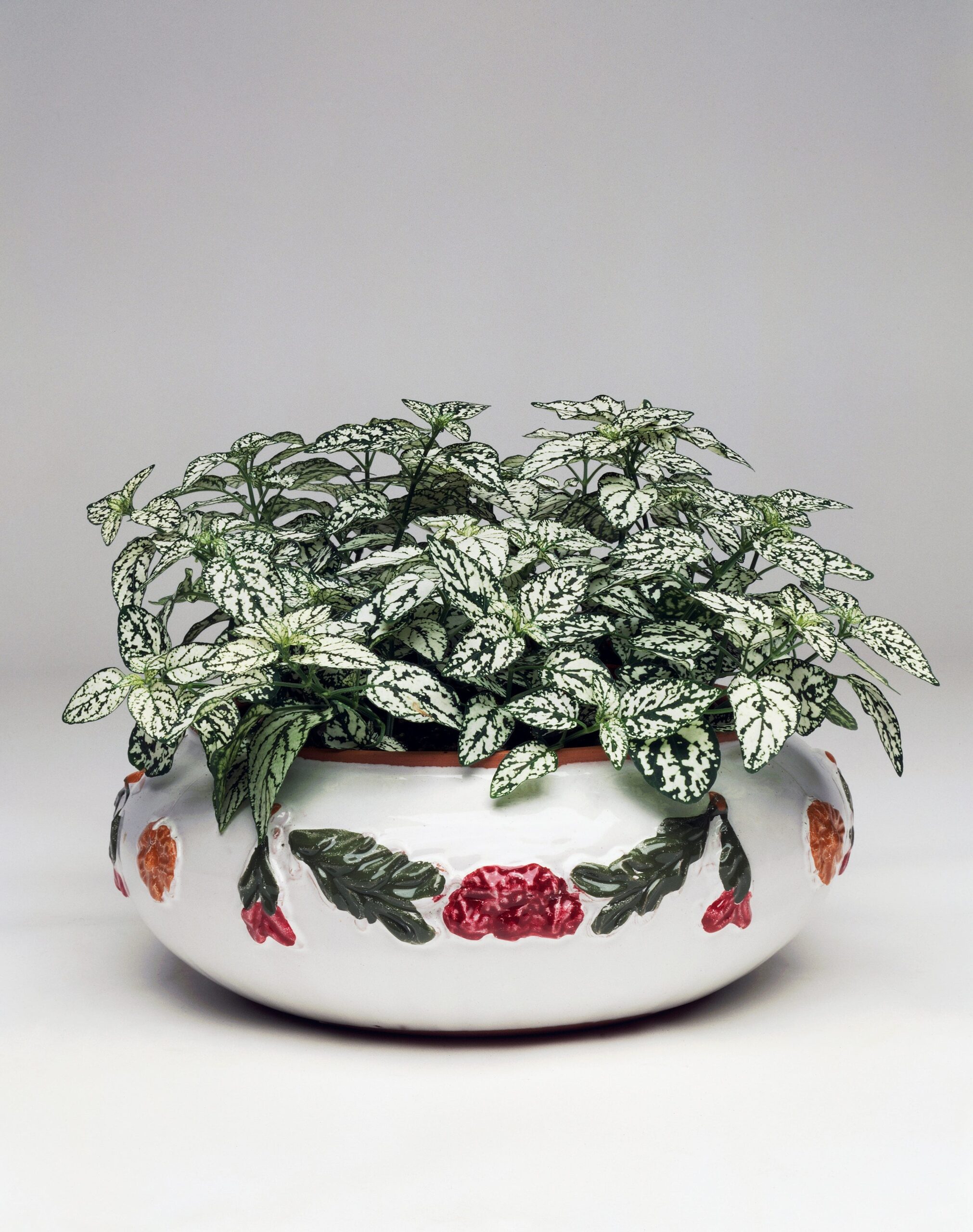Looking for a houseplant that serves main character energy? The polka dot plant (or Hypoestes phyllostachya, if you’re feeling fancy) is having its moment—and for good reason. The petite showstopper’s leaves look like they’ve been kissed by a paintbrush in shades of pink, white, or red.
While their lifespan may be relatively brief (typically one to two years), they make every moment count. They thrive in temperatures above 60°F with at least 50 percent humidity, making them perfect candidates for that sunny bathroom window or kitchen corner. Their compact size and moderate growth rate mean they won’t overwhelm your carefully curated space, but their vibrant patterns—created by natural pigments called anthocyanins—certainly command attention.
Whether you’re a seasoned plant parent or just dipping your toes into the world of botanicals, the polka dot plant is a perfect—and gorgeous—choice for your home. Below, we’ve consulted the experts for the ultimate guide to caring for polka dot plants.
Where Do Polka Dot Plants Come From?
These botanical beauties originate from the lush landscapes of Madagascar, South Africa, and Asia—living a tropical jungle life before deciding to grace our homes with their presence. In their native habitat, they’re typically found growing underneath tree canopies where they receive filtered sunlight or shade (jealous). Their tropical roots mean many gardeners in cooler climates treat them as seasonal guests, growing them as annuals outdoors. But in certain locales, these plants know how to make themselves perhaps too comfortable—they’ve earned a reputation as ambitious spreaders in Australia and tropical regions like Hawaii, where they’re considered invasive. In temperate climates, however, they’re perfectly well-mannered additions to any garden or indoor space.
How Much Sunlight Do Polka Dot Plants Need?
“Polka dots prefer bright, indirect light,” Caleb Young, creator of Rare Indoor Plants tells us. “They should be placed in a location that receives filtered sunlight or indirect light for at least a few hours a day.” A well-placed polka dot plant near an east or south-facing window will reward you with its most vibrant color and spots—direct sunlight may burn the foliage. If your plant becomes leggy or loses its color, it’s probably not getting enough light.
How Often Should You Water Polka Dot Plants?
Watering your polka dot plant is a bit of a delicate dance: too much, and you’ll drown it, too little, and it will wilt. “In general polka dots prefer to be kept evenly moist, which is about 1-2 waterings per week,” Young tells us.
Janet Loughrey of Garden Design shares a handy trick: “To see if your polka dot plant needs water, stick your finger into the soil. If the soil is dry a half-inch inch deep, it’s time to water.” Kind of like taking your plant’s temperature!
What Kind of Soil Do Polka Dot Plants Need?
Polka dot plants aren’t too picky, but they prefer a well-draining soil that is rich with organic matter. Young recommends “combining equal parts of peat, perlite, and vermiculite for good drainage.” If you can’t provide your own mix, a high quality all-purpose potting mix will provide the plant with everything it needs.
Do Polka Dot Plants Need Fertilizer?
Monthly feeding during the warm growing season keeps these spotted specimens in top form. A balanced, organic fertilizer provides just the boost they need to maintain their signature patterns and vibrant growth. If planting in-ground, mix organic compost into the soil each spring before planting. During the winter when plant growth slows down, fertilizing should be reduced.
How Often Do Polka Dot Plants Need to Be Repotted?
Every year or two, your polka dot plant may need a living upgrade. “If the roots start growing out of the drainage holes or you notice stunted growth, it’s time to report into a slightly larger container,” landscape architect and founder of Yardwork, Michael Clarke, explains. The new pot should be no more than two inches wider and deeper than the old pot. The best time to re-pot your polka dot plant is in the spring after its winter dormant period.
How Do You Guard Against Pests?
Vigilance is vital when it comes to prevention. Clarke recommends regularly wiping down leaves with a damp cloth to keep dust at bay and minimize pest hiding spots. Neem oil is a fantastic natural approach that keeps bugs and pathogens in check.
Can You Propagate a Polka Dot Plant?
Yes! Propagation is remarkably straightforward with these plants. “You can just take a small healthy cutting, remove the lower leaves and then place it in a jar of clean water,” Young explains. Within weeks, you’ll have new plants ready to enhance another corner of your space. Spread the polka dot love, why don’t you?

Julia Cancilla is the engagement editor (and resident witch) at ELLE Decor, where she manages the brand’s social media presence and covers trends, lifestyle, and culture in the design world. Julia built her background at Inked magazine, where she grew their social media audiences by two million, conducted interviews with A-list celebrities, and penned feature articles focusing on pop culture, art and lifestyle. Over her five years of digital media experience, Julia has written about numerous topics, from fashion to astrology.








